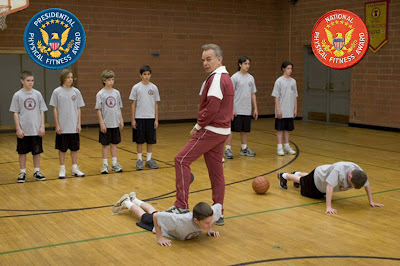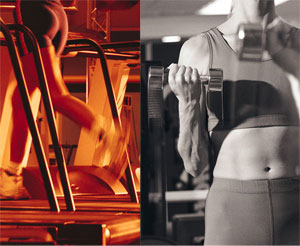Bias doesn’t always work against you (or why gym class might not be all it’s cracked up to be)

This blog entry’s study comes from my friend Brad Pilon, who said, and-I-quote, “I wanna get you back to dissecting papers on your blog,” which jolted me into realizing I haven’t in a long time.
One idea that Brad and I have been talking about (apart from trying to stick to manipulating factors that make LARGE contributions to progress) has been the notion that diet and exercise, though both important for “health” and “fitness”, may have little contributions towards their counterpart body components. Diet seems to have the greatest impact on body fat, while exercise (and more specifically, resistance exercise) seems to have a greater impact on lean body mass. While one CAN use exercise to assist in losing body fat, I think there is probably some truth in the saying, “You can’t out-train a bad diet,” and similarly, I would argue that at most levels, you probably can’t eat yourself more muscles, otherwise, there would an epidemic of Ah-nolds in America, not obese people. Read More...
Aerobic exercise vs weights. Who will win?

There is no question that diet and exercise both play a role in fat/weight loss. Schools of thought range from the “it matters more what you eat” camp to the “it matters more how much you move with subgroups ranging from the “it matters how many calories you eat” camp to the “it matters if you do weights” camp and then the all-popular, “just move more” vs. “move, but move really really fast in short intervals of time” camps.
Jen Sinkler of Experience Life magazine brought this study to my attention, because I belong to the, “it matters if you do weights and probably doesn’t matter much if you move more, whether at a steady pace or really really fast in burst intervals.” camp ((mostly out of laziness and abhorrence of “cardio”) Read More...
Get off the never ending path to nowhere
 Everytime I’m at the gym, I notice the banks of “cardio” machines. In fact, for many consumers, the number and availability of the card machines is the single most important factor in decision making when buying a guy membership (which is why gyms can get away with less-than-optimal weight areas but they can’t get away from sub-par cardio equipment.) In the winter time (in Canada) I can understand how using a cardio-machine can be useful. Personally, I abhor most forms of cardio for the sake of doing cardiovascular work. I’ve been a competitive swimmer, and a competitive rower and we never did cardio just to do cardio. We worked out because we wanted to get faster. That being said, if it’s nice outside and you can run (or bike, or climb stairs, or row), there are a number of very good reasons why you should leave the gym and the endless run/bike/stairclimb to nowhere, but I’m going to focus on the biomechanics and energetics of running/walking.
Everytime I’m at the gym, I notice the banks of “cardio” machines. In fact, for many consumers, the number and availability of the card machines is the single most important factor in decision making when buying a guy membership (which is why gyms can get away with less-than-optimal weight areas but they can’t get away from sub-par cardio equipment.) In the winter time (in Canada) I can understand how using a cardio-machine can be useful. Personally, I abhor most forms of cardio for the sake of doing cardiovascular work. I’ve been a competitive swimmer, and a competitive rower and we never did cardio just to do cardio. We worked out because we wanted to get faster. That being said, if it’s nice outside and you can run (or bike, or climb stairs, or row), there are a number of very good reasons why you should leave the gym and the endless run/bike/stairclimb to nowhere, but I’m going to focus on the biomechanics and energetics of running/walking.
Treadmill running is very different than overground running. Treadmill _walking_ is very different than overground walking. This has been shown time and time again in numerous biomechanics studies. But when it comes to fat loss and treadmill running or even treadmill intervals (if you’re of the school that cardio, in any of its many forms, including HIIT is important for fat loss), these differences are quite important. To understand some of these differences though, we need to have a language for gait. Read More...
HIIT vs Steady State–Who will win??
I’m no “real world” trainer, but if there’s anything that I am, it’s a “real world” researcher. And if there’s anything I can say that I do well, it’s research reviews. This review was a very exciting thing for me to do because this is a trial that has “real world” training implications and hopefully, you will see that not everything is crystal clear in an abstract. It also enabled me to demonstrate a few examples of how alternate analyses can be useful as well as the importance of succinct data reporting. Read More...